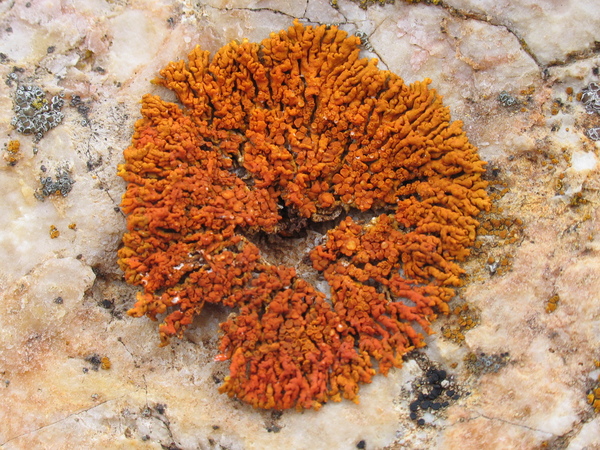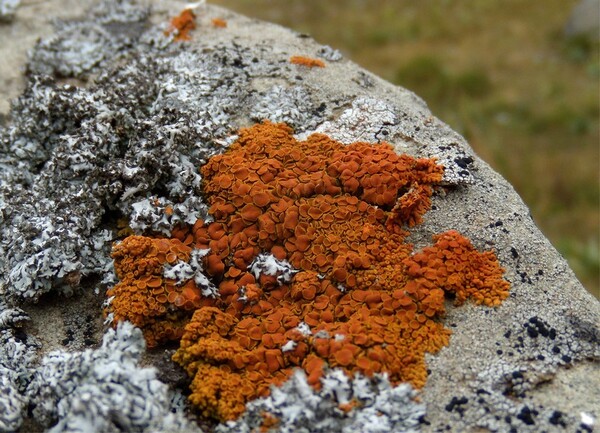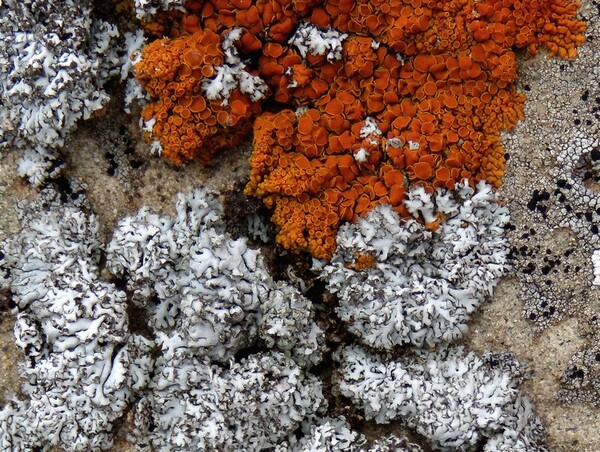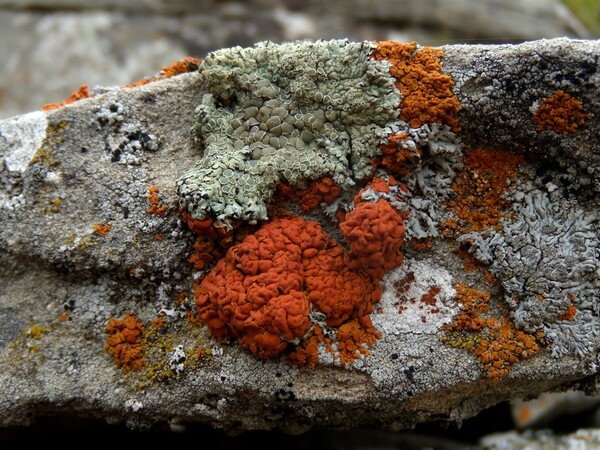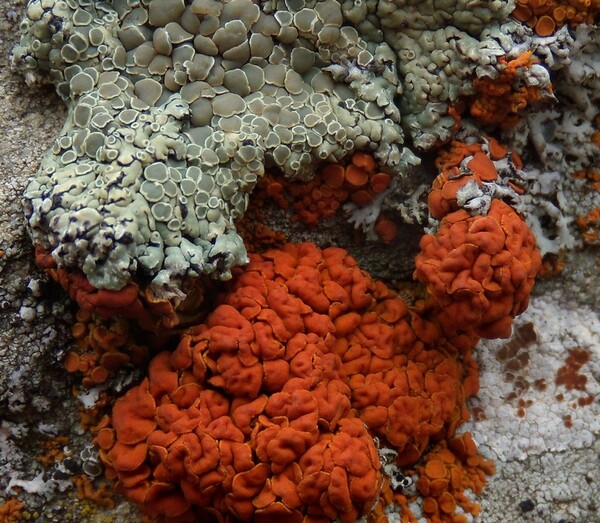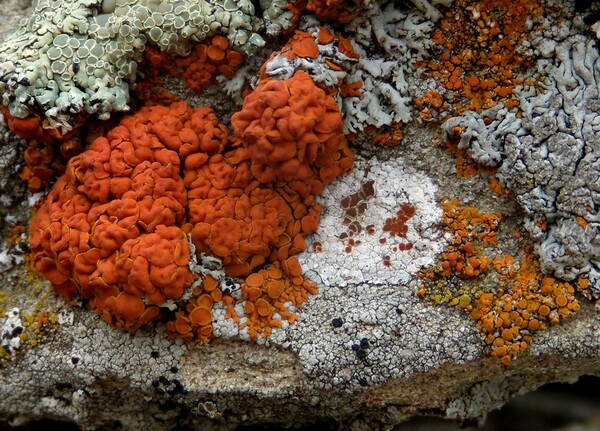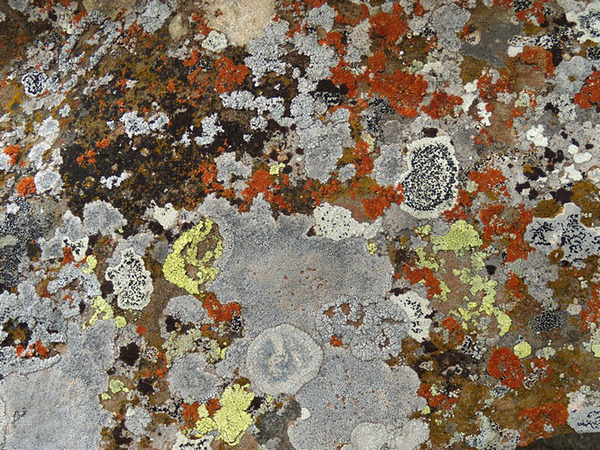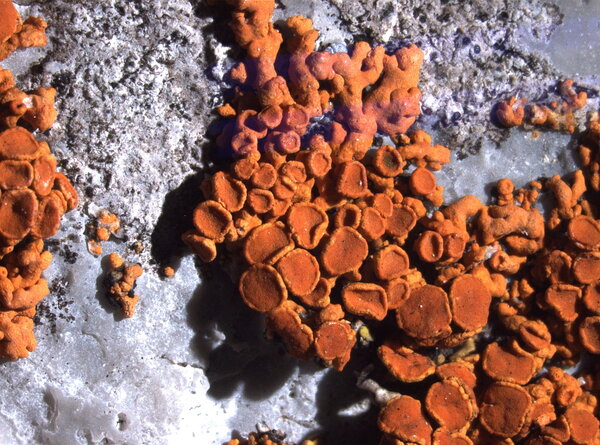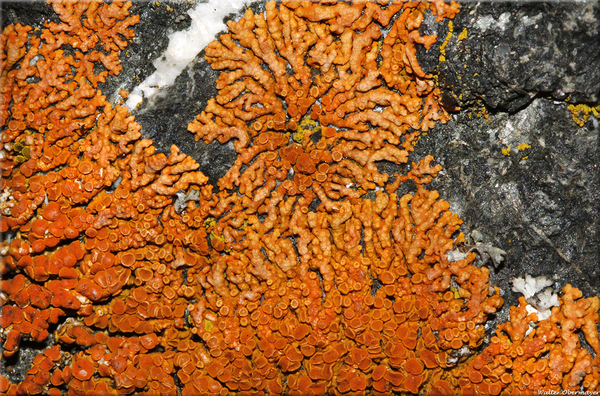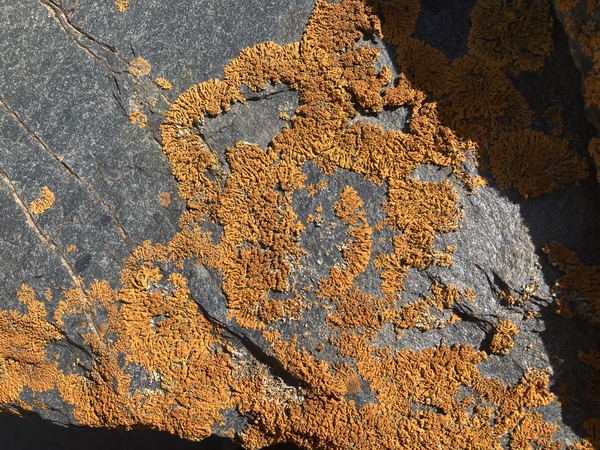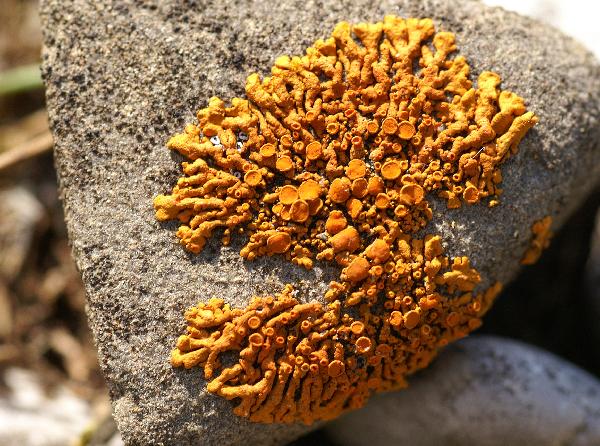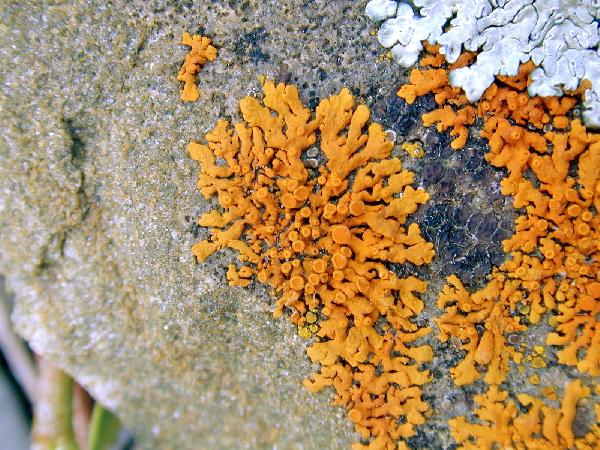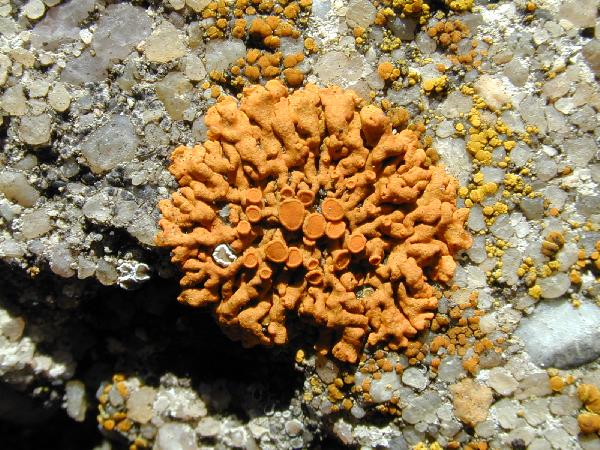Rusavskia elegans (Link) S.Y. Kondr. & Kärnefelt subsp. elegans
Ukrayins’kyi Bot. Zhurn., 60: 433, 2003. Basionym: Lichen elegans Link - Ann. Naturges., 1: 37, 1791.
Synonyms: Amphiloma elegans (Link) Körb.; Caloplaca dissidens (Nyl.) Mérat; Caloplaca elegans (Link) Th. Fr.; Caloplaca elegans var. tenuis (Wahlenb.) Th. Fr.; Caloplaca tegularis (Ehrh.) Sandst. non auct.; Gasparrinia elegans (Link) Stein; Physcia miniata sensu A. Massal. et auct. ital. p.p.; Placodium dissidens Nyl.; Placodium elegans (Link) DC.; Placodium elegans var. tenue (Wahlenb.) Nyl.; Xanthoria elegans (Link) Th. Fr. var. elegans; Xanthoria elegans var. tenuis (Wahlenb.) Th. Fr.
Distribution: N - VG, Frl (TSB 3429), Ven (Nimis 1994, Nascimbene & Caniglia 1997, 2003c, Caniglia & al. 1999, Nascimbene 2005c, 2008, 2008c, Thor & Nascimbene 2007, Nascimbene & Marini 2007), TAA (Caniglia & al. 2002, Nascimbene 2003, 2005b, 2008b, Nascimbene & al. 2005, 2006, 2022, Lang 2009, Spitale & Nascimbene 2012), Lomb (Rivellini 1994, Valcuvia & al. 2003, Dalle Vedove & al. 2004, Gheza 2019, 2019b, Favero-Longo & al. 2023), Piem (Morisi & Sereno 1995, Isocrono & Falletti 1999, Isocrono & al. 2003, 2004, Morisi 2005, Isocrono & Piervittori 2008, Favero-Longo & al. 2004, 2006b, 2015), VA (Borlandelli & al. 1996, Piervittori & Isocrono 1997, 1999, Piervittori & al. 2001, 2004, Matteucci & al. 2008c, 2015c, Gazzano & al. 2009b, Sandrone 2014, Hafellner 2021, Ravera & al. 2024b), Emil (Fariselli & al. 2020), Lig (Brunialti & al. 1999). C - Tosc (Benesperi 2011), Marc (Nimis & Tretiach 1999, Tretiach & Pinna 2000), Umb (Nimis & Tretiach 1999, Ravera & al. 2006), Abr (Nimis & Tretiach 1999, Brackel 2015, Gheza & al. 2021), Mol (Ravera & Genovesi 2012, Genovesi & Ravera 2014, Brackel 2020), Sar (Brackel & Berger 2019). S - Bas (Potenza 2006), Cal (Puntillo 1996), Si (Ottonello & al. 2011, Di Martino & Stancanelli 2015).
Description: Thallus foliose, heteromerous, dorsiventral, tightly adnate, deep orange to orange-red, forming up to 6 cm wide, often confluent rosettes, the central parts sometimes dying off in old thalli. Lobes strongly convex, 0.5-1(-1.3) mm wide, remaining discrete for their entire length, with pale maculae visible at high magnification; lower surface white, rarely with very short, white hapters. Upper and lower cortex mesodermate paraplectenchymatous; medulla white. Apothecia common, lecanorine/zeorine, laminal, substipitate, up to 2.5 mm across, orange to orange-red. Epithecium orange-brown, c. 10 µm thick, K+ purple-red; hymenium colourless, 60-90 µm high; paraphyses simple or sparingly branched, septate, the apical cells swollen; hypothecium colourless to pale brown, 20-80 µm high. Asci 8-spored, clavate, functionally unitunicate, apically thickened with a broad internal beak, the inner part of apex and external cap I+ blue, Teloschistes-type. Ascospores 2-celled, polarilocular, hyaline, ellipsoid, (9-)11-16(-18) x 5-9 µm, the equatorial thickening (“septum”) (1-)3-5 µm. Pycnidia immersed, slightly darker than thallus. Conidia narrowly ellipsoid, 2-3.5 x 1-1.5 µm. Photobiont chlorococcoid. Spot tests: upper surface K+ purple-red, C-, KC-, P-, UV+ intensely orange-red. Chemistry: parietin (major), fallacinal, emodin, teloschistin and parietinic acid, corresponding with chemosyndrome A of Søchting (1997).Note: a holarctic and bipolar species found both on well-lit natural rock outcrops and on man-made substrata (especially tiles), mostly in upland areas, descending to lower elevations in continental sites; in strongly eutrophicated situations it can occasionally overgrow bryophytes and plant remains. The species is extraordinarily variable in colour and form, very different individuals often occurring side by side on the same surface.
Growth form: Foliose, narrow lobed
Substrata: rocks
Photobiont: green algae other than Trentepohlia
Reproductive strategy: mainly sexual
Commonnes-rarity: (info)
Alpine belt: very common
Subalpine belt: very common
Oromediterranean belt: rare
Montane belt: very rare
Submediterranean belt: extremely rare
Padanian area: absent
Humid submediterranean belt: extremely rare
Humid mediterranean belt: absent
Dry mediterranean belt: absent
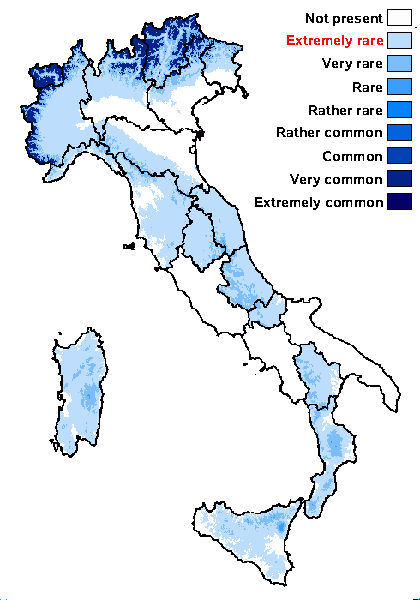
Predictive model
Herbarium samples
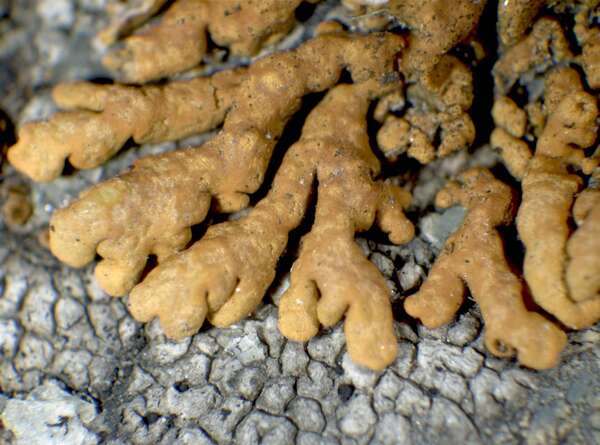

P.L. Nimis; Owner: Department of Life Sciences, University of Trieste
Herbarium: TSB (34624)
2002/01/22
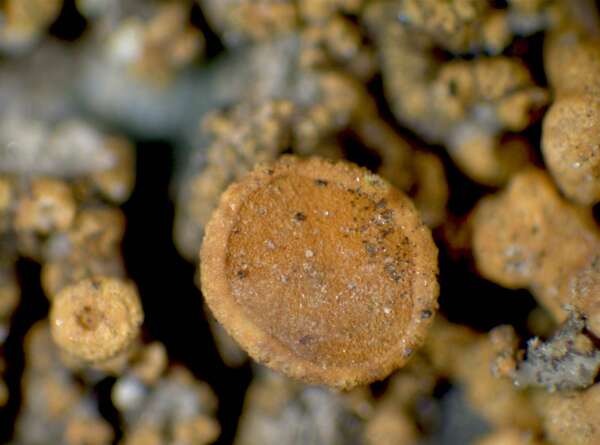

P.L. Nimis; Owner: Department of Life Sciences, University of Trieste
Herbarium: TSB (34624)
2002/01/22
apothecium
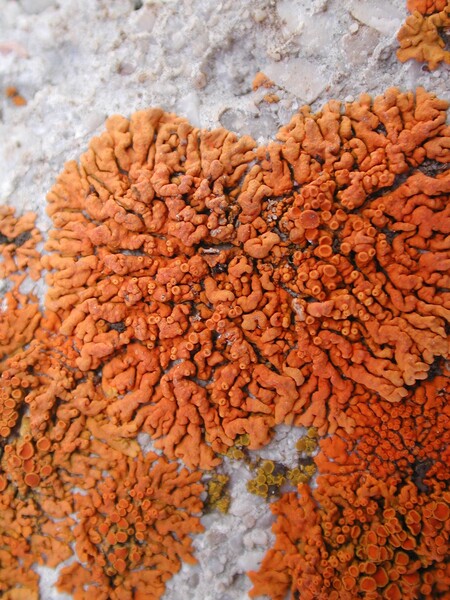

Juri Nascimbene - CC BY-SA 4.0; Owner: ITALIC - Dyades Project - Dept. of Life Sciences, University of Trieste
Italy, Trentino-Alto Adige, Bolzano/Bozen, Sciliar/Schlern
2007
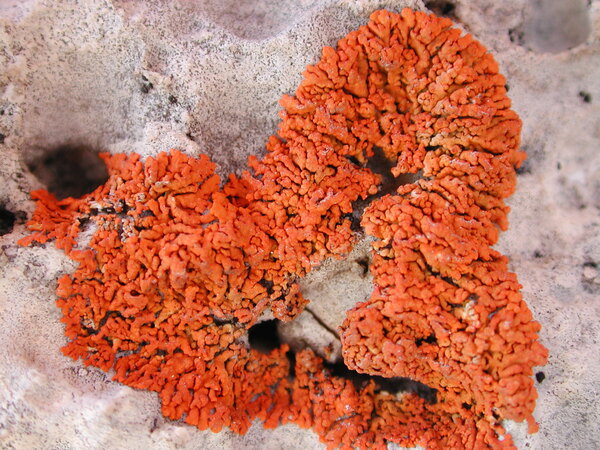

Juri Nascimbene - CC BY-SA 4.0; Owner: ITALIC - Dyades Project - Dept. of Life Sciences, University of Trieste
Italy, Trentino-Alto Adige, Bolzano/Bozen, Sciliar/Schlern
2007
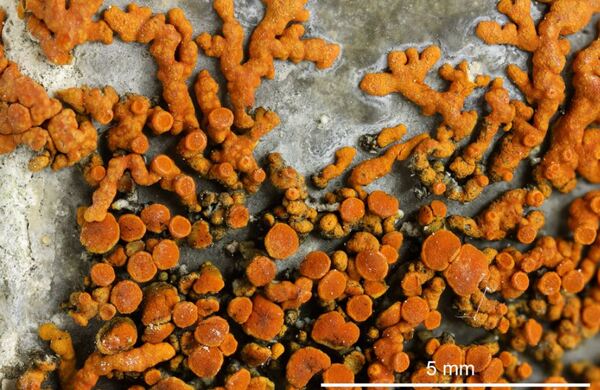

Felix Schumm – CC BY-SA 4.0
[4764], Schweiz, Kanton Obwalden, Sachsler Seefeld, 12 km südlich Sarnen östl. des kleinen Melchtals, unterer See, ca 1820 m, an Kalkblöcken. Leg. et det. Schumm 04.09.1997
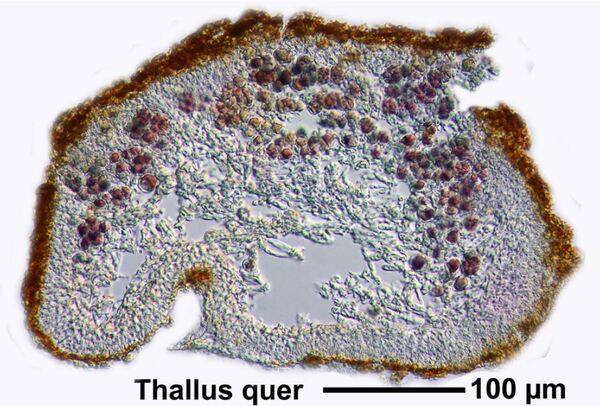

Felix Schumm – CC BY-SA 4.0
[4764], Schweiz, Kanton Obwalden, Sachsler Seefeld, 12 km südlich Sarnen östl. des kleinen Melchtals, unterer See, ca 1820 m, an Kalkblöcken. Leg. et det. Schumm 04.09.1997


Felix Schumm – CC BY-SA 4.0
[4764], Schweiz, Kanton Obwalden, Sachsler Seefeld, 12 km südlich Sarnen östl. des kleinen Melchtals, unterer See, ca 1820 m, an Kalkblöcken. Leg. et det. Schumm 04.09.1997
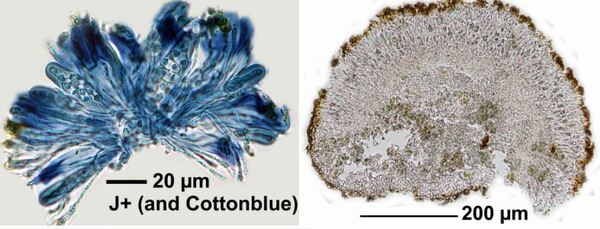

Felix Schumm – CC BY-SA 4.0
[4764], Schweiz, Kanton Obwalden, Sachsler Seefeld, 12 km südlich Sarnen östl. des kleinen Melchtals, unterer See, ca 1820 m, an Kalkblöcken. Leg. et det. Schumm 04.09.1997
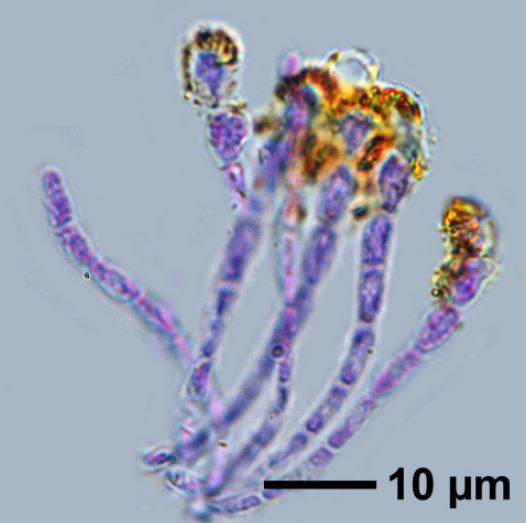

Felix Schumm – CC BY-SA 4.0
[4764], Schweiz, Kanton Obwalden, Sachsler Seefeld, 12 km südlich Sarnen östl. des kleinen Melchtals, unterer See, ca 1820 m, an Kalkblöcken. Leg. et det. Schumm 04.09.1997


Felix Schumm – CC BY-SA 4.0
[4764], Schweiz, Kanton Obwalden, Sachsler Seefeld, 12 km südlich Sarnen östl. des kleinen Melchtals, unterer See, ca 1820 m, an Kalkblöcken. Leg. et det. Schumm 04.09.1997


Felix Schumm – CC BY-SA 4.0
[4764], Schweiz, Kanton Obwalden, Sachsler Seefeld, 12 km südlich Sarnen östl. des kleinen Melchtals, unterer See, ca 1820 m, an Kalkblöcken. Leg. et det. Schumm 04.09.1997
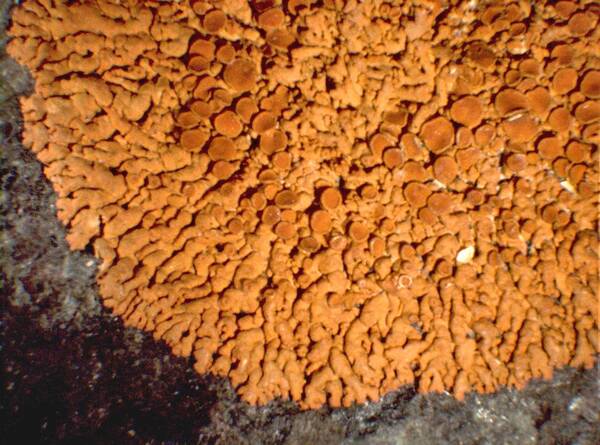
Miris Castello - CC BY-SA 4.0; Owner: Department of Life Sciences - University of Trieste
Antarctica, Terra Nova Bay.
Herbarium: TSB - Antarctic Herbarium

Miris Castello - CC BY-SA 4.0; Owner: Department of Life Sciences - University of Trieste
Antarctica, Terra Nova Bay.
Herbarium: TSB - Antarctic Herbarium
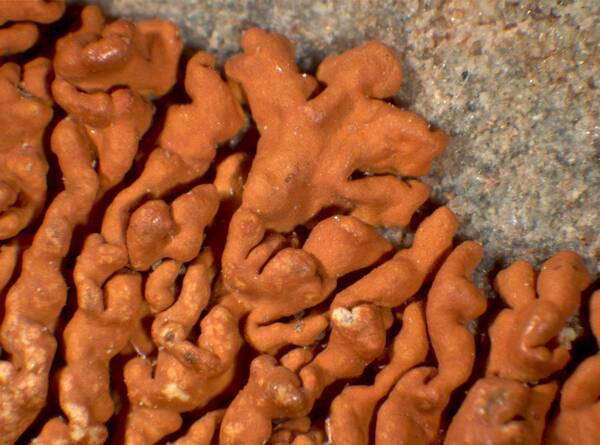
Miris Castello - CC BY-SA 4.0; Owner: Department of Life Sciences - University of Trieste
Antarctica, Terra Nova Bay.
Herbarium: TSB - Antarctic Herbarium
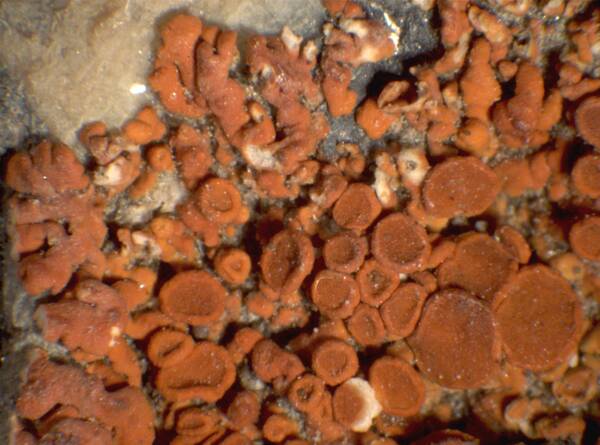
Miris Castello - CC BY-SA 4.0; Owner: Department of Life Sciences - University of Trieste
Antarctica, Terra Nova Bay.
Herbarium: TSB - Antarctic Herbarium
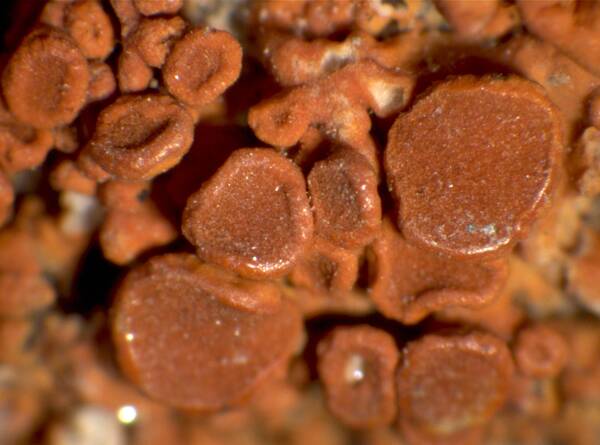
Miris Castello - CC BY-SA 4.0; Owner: Department of Life Sciences - University of Trieste
Antarctica, Terra Nova Bay.
Herbarium: TSB - Antarctic Herbarium
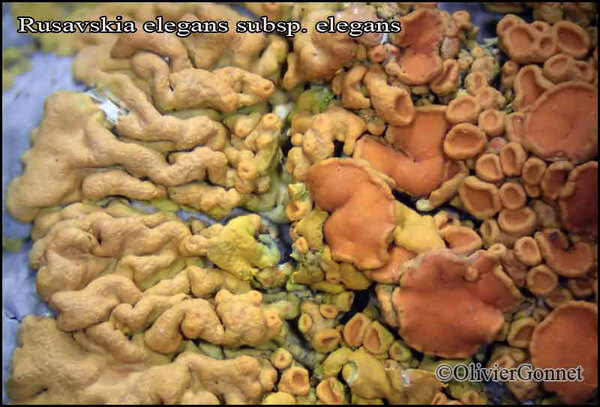
Courtesy Danièle et Olivier Gonnet - Source: https://www.afl-lichenologie.fr/Photos_AFL/Photos_AFL_R/Textes_R3/Rusavskia_elegans.htm
France, 24/7/2014 - Saint-Paul-sur-Ubaye, alt. 2000 m - Alpes-de-Haute-Provence
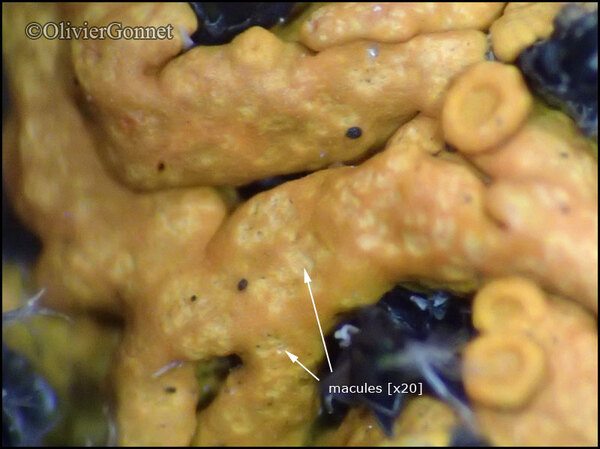
Courtesy Danièle et Olivier Gonnet - Source: https://www.afl-lichenologie.fr/Photos_AFL/Photos_AFL_R/Textes_R3/Rusavskia_elegans.htm
France, 24/7/2014 - Saint-Paul-sur-Ubaye, alt. 2000 m - Alpes-de-Haute-Provence

Courtesy Danièle et Olivier Gonnet - Source: https://www.afl-lichenologie.fr/Photos_AFL/Photos_AFL_R/Textes_R3/Rusavskia_elegans.htm
France, 24/7/2014 - Saint-Paul-sur-Ubaye, alt. 2000 m - Alpes-de-Haute-Provence
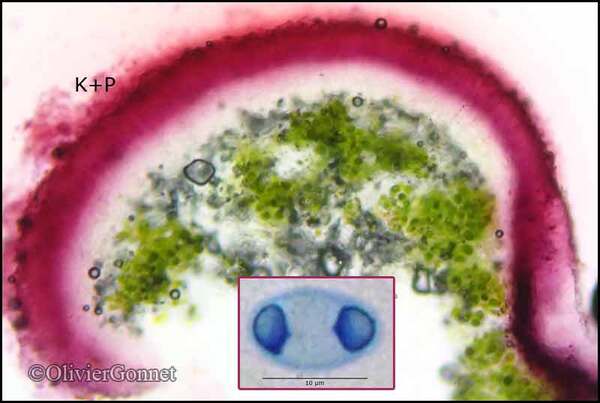
Courtesy Danièle et Olivier Gonnet - Source: https://www.afl-lichenologie.fr/Photos_AFL/Photos_AFL_R/Textes_R3/Rusavskia_elegans.htm
France, 24/7/2014 - Saint-Paul-sur-Ubaye, alt. 2000 m - Alpes-de-Haute-Provence
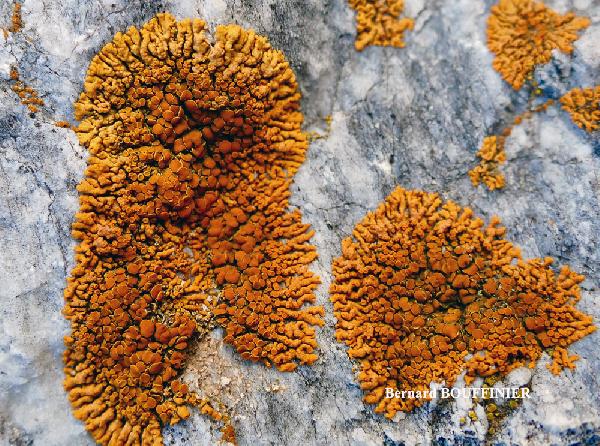
Bernard Bouffinier - Source: http://www.lichensmaritimes.org/index.php?task=fiche&lichen=962&lang=en
France, Saillagouse, Pyrénées-Orientales 1400 m
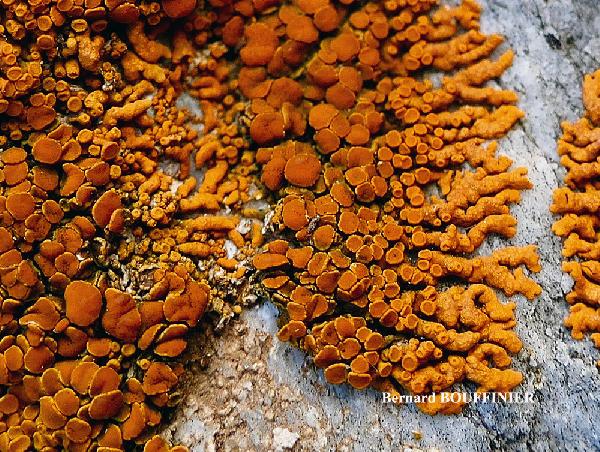
Bernard Bouffinier - Source: http://www.lichensmaritimes.org/index.php?task=fiche&lichen=962&lang=en
France, Saillagouse, Pyrénées-Orientales 1400 m

Jacques Haine - Source: http://www.lichensmaritimes.org/index.php?task=fiche&lichen=962&lang=en
France, Vercors
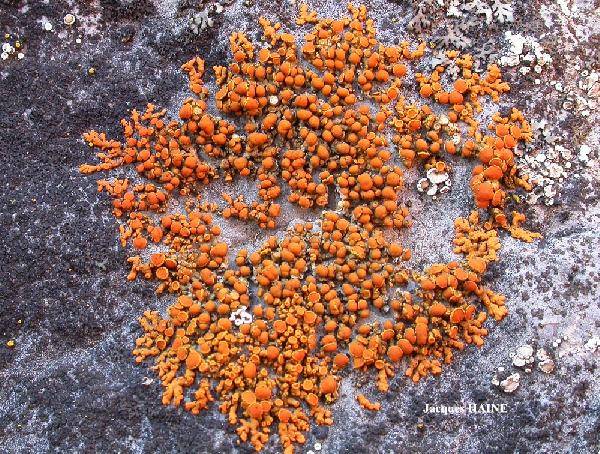
Jacques Haine - Source: http://www.lichensmaritimes.org/index.php?task=fiche&lichen=962&lang=en
France, Vercors

Jacques Haine - Source: http://www.lichensmaritimes.org/index.php?task=fiche&lichen=962&lang=en
France, Vercors

Jacques Haine - Source: http://www.lichensmaritimes.org/index.php?task=fiche&lichen=962&lang=en
France, Vercors
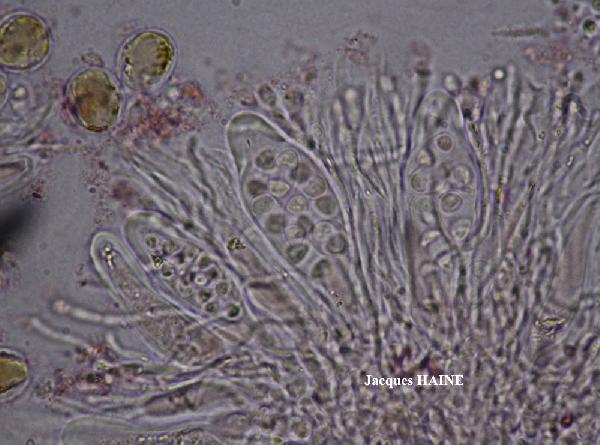
Jacques Haine - Source: http://www.lichensmaritimes.org/index.php?task=fiche&lichen=962&lang=en
France, Vercors
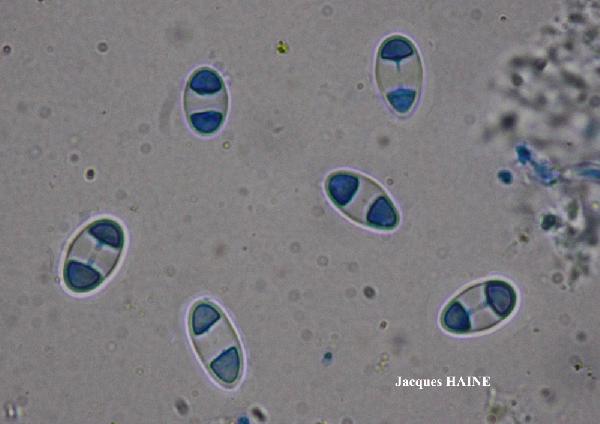
Jacques Haine - Source: http://www.lichensmaritimes.org/index.php?task=fiche&lichen=962&lang=en
France, Vercors
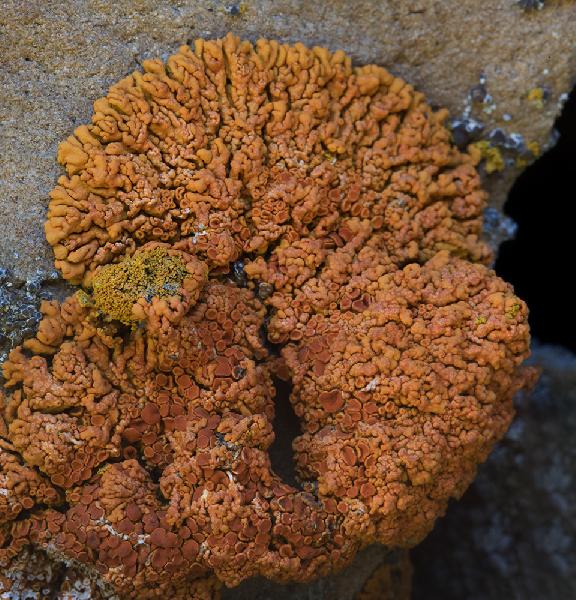
Marta González Garcia - Centro de Estudios Micologicos Asturianos
Spain, Recolectado sobre las piedras de las cabañas de la braña La Mesa (Somiedo-Asturias), 24-X-2021, junto a Polycauliona candelaria., ERD-9111.

Marta González Garcia - Centro de Estudios Micologicos Asturianos
Spain, Recolectado sobre las piedras de las cabañas de la braña La Mesa (Somiedo-Asturias), 24-X-2021, junto a Polycauliona candelaria., ERD-9111.
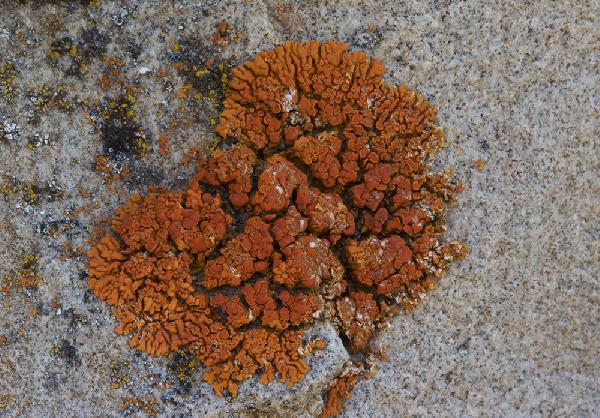
Marta González Garcia - Centro de Estudios Micologicos Asturianos
Spain, Recolectado sobre las piedras de las cabañas de la braña La Mesa (Somiedo-Asturias), 24-X-2021, junto a Polycauliona candelaria., ERD-9111.
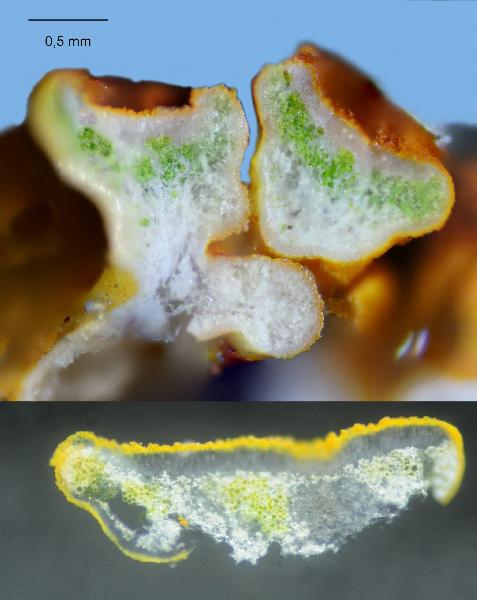
Marta González Garcia - Centro de Estudios Micologicos Asturianos
Spain, Recolectado sobre las piedras de las cabañas de la braña La Mesa (Somiedo-Asturias), 24-X-2021, junto a Polycauliona candelaria., ERD-9111.
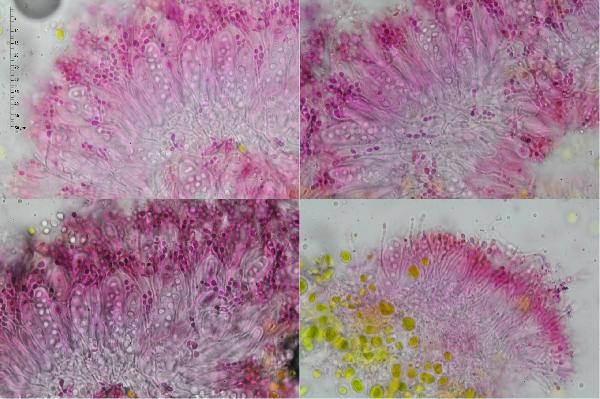
Marta González Garcia - Centro de Estudios Micologicos Asturianos
Spain, Recolectado sobre las piedras de las cabañas de la braña La Mesa (Somiedo-Asturias), 24-X-2021, junto a Polycauliona candelaria., ERD-9111.
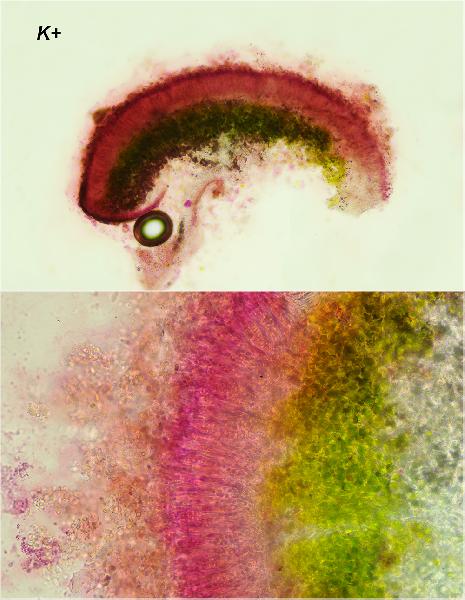
Marta González Garcia - Centro de Estudios Micologicos Asturianos
Spain, Recolectado sobre las piedras de las cabañas de la braña La Mesa (Somiedo-Asturias), 24-X-2021, junto a Polycauliona candelaria., ERD-9111.
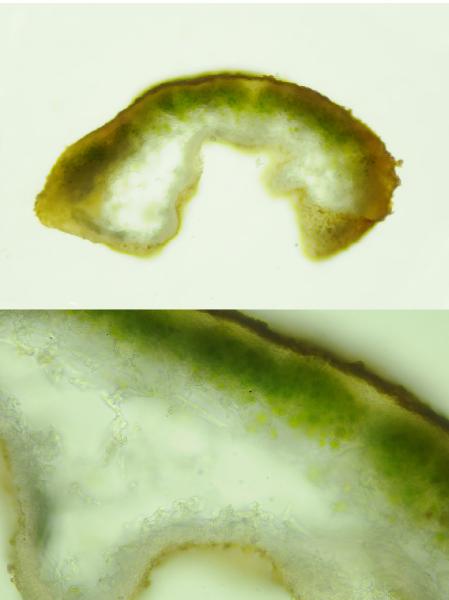
Marta González Garcia - Centro de Estudios Micologicos Asturianos
Spain, Recolectado sobre las piedras de las cabañas de la braña La Mesa (Somiedo-Asturias), 24-X-2021, junto a Polycauliona candelaria., ERD-9111.
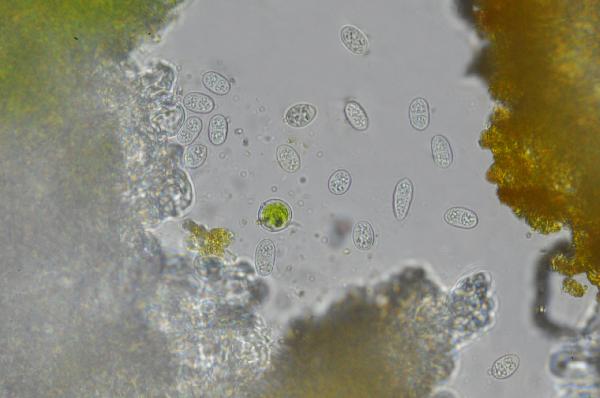
Marta González Garcia - Centro de Estudios Micologicos Asturianos
Spain, Recolectado sobre las piedras de las cabañas de la braña La Mesa (Somiedo-Asturias), 24-X-2021, junto a Polycauliona candelaria., ERD-9111.
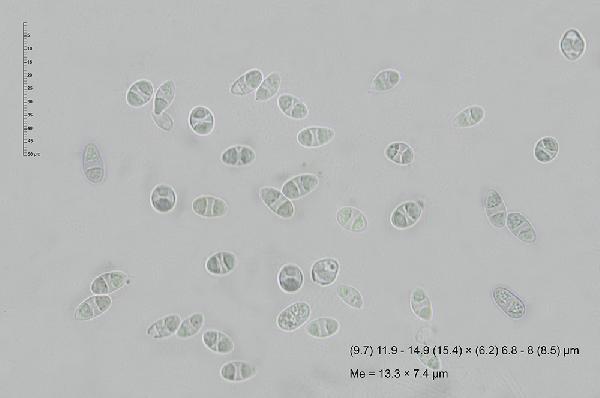
Marta González Garcia - Centro de Estudios Micologicos Asturianos
Spain, Recolectado sobre las piedras de las cabañas de la braña La Mesa (Somiedo-Asturias), 24-X-2021, junto a Polycauliona candelaria., ERD-9111.
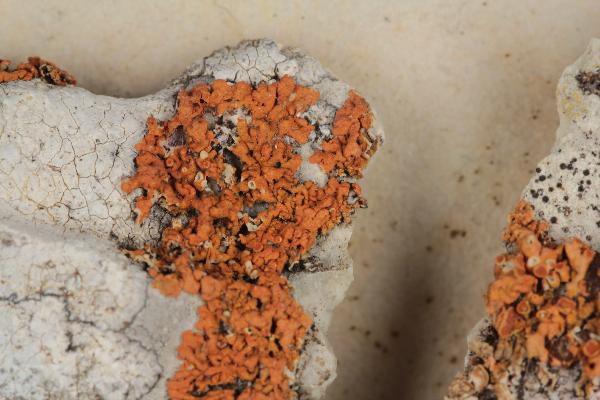
Collezione lichenologica Abramo Massalongo del Museo di Storia Naturale G. Ligabue di Venezia - Autori: Seggi, Linda; Trabucco, Raffaella Proprietà: Fondazione Musei Civici di Venezia - CC BY-NC
Italy, Veneto, in M. Baldo
as Physcia elegans
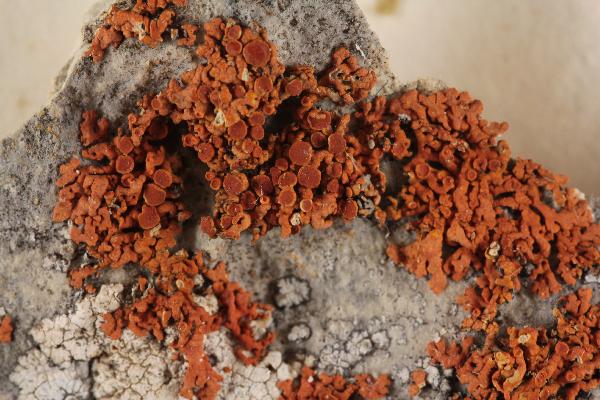
Collezione lichenologica Abramo Massalongo del Museo di Storia Naturale G. Ligabue di Venezia - Autori: Seggi, Linda; Trabucco, Raffaella Proprietà: Fondazione Musei Civici di Venezia - CC BY-NC
Italy, Veneto, in opp. Velo 1855
as Physcia elegans


Felix Schumm - CC BY-SA 4.0
[VZR420], Nova Zelandia. South Island. Otago (pars centralis), 45°4.3'
austr., 169°45.8' orient., 1900 m, ad saxa. Leg. & det. W. Malcolm. EX
A. VEZDA: LICHENES RARIORES EXSICCATI NR. 420.


Felix Schumm - CC BY-SA 4.0
[VZR420], Nova Zelandia. South Island. Otago (pars centralis), 45°4.3'
austr., 169°45.8' orient., 1900 m, ad saxa. Leg. & det. W. Malcolm. EX
A. VEZDA: LICHENES RARIORES EXSICCATI NR. 420.
Growth form: Foliose, narrow lobed
Substrata: rocks
Photobiont: green algae other than Trentepohlia
Reproductive strategy: mainly sexual
Commonnes-rarity: (info)
Alpine belt: very common
Subalpine belt: very common
Oromediterranean belt: rare
Montane belt: very rare
Submediterranean belt: extremely rare
Padanian area: absent
Humid submediterranean belt: extremely rare
Humid mediterranean belt: absent
Dry mediterranean belt: absent

Predictive model
| Herbarium samples |


P.L. Nimis; Owner: Department of Life Sciences, University of Trieste
Herbarium: TSB (34624)
2002/01/22


P.L. Nimis; Owner: Department of Life Sciences, University of Trieste
Herbarium: TSB (34624)
2002/01/22
apothecium


Juri Nascimbene - CC BY-SA 4.0; Owner: ITALIC - Dyades Project - Dept. of Life Sciences, University of Trieste
Italy, Trentino-Alto Adige, Bolzano/Bozen, Sciliar/Schlern
2007


Juri Nascimbene - CC BY-SA 4.0; Owner: ITALIC - Dyades Project - Dept. of Life Sciences, University of Trieste
Italy, Trentino-Alto Adige, Bolzano/Bozen, Sciliar/Schlern
2007


Felix Schumm – CC BY-SA 4.0
[4764], Schweiz, Kanton Obwalden, Sachsler Seefeld, 12 km südlich Sarnen östl. des kleinen Melchtals, unterer See, ca 1820 m, an Kalkblöcken. Leg. et det. Schumm 04.09.1997


Felix Schumm – CC BY-SA 4.0
[4764], Schweiz, Kanton Obwalden, Sachsler Seefeld, 12 km südlich Sarnen östl. des kleinen Melchtals, unterer See, ca 1820 m, an Kalkblöcken. Leg. et det. Schumm 04.09.1997


Felix Schumm – CC BY-SA 4.0
[4764], Schweiz, Kanton Obwalden, Sachsler Seefeld, 12 km südlich Sarnen östl. des kleinen Melchtals, unterer See, ca 1820 m, an Kalkblöcken. Leg. et det. Schumm 04.09.1997


Felix Schumm – CC BY-SA 4.0
[4764], Schweiz, Kanton Obwalden, Sachsler Seefeld, 12 km südlich Sarnen östl. des kleinen Melchtals, unterer See, ca 1820 m, an Kalkblöcken. Leg. et det. Schumm 04.09.1997


Felix Schumm – CC BY-SA 4.0
[4764], Schweiz, Kanton Obwalden, Sachsler Seefeld, 12 km südlich Sarnen östl. des kleinen Melchtals, unterer See, ca 1820 m, an Kalkblöcken. Leg. et det. Schumm 04.09.1997


Felix Schumm – CC BY-SA 4.0
[4764], Schweiz, Kanton Obwalden, Sachsler Seefeld, 12 km südlich Sarnen östl. des kleinen Melchtals, unterer See, ca 1820 m, an Kalkblöcken. Leg. et det. Schumm 04.09.1997


Felix Schumm – CC BY-SA 4.0
[4764], Schweiz, Kanton Obwalden, Sachsler Seefeld, 12 km südlich Sarnen östl. des kleinen Melchtals, unterer See, ca 1820 m, an Kalkblöcken. Leg. et det. Schumm 04.09.1997

Miris Castello - CC BY-SA 4.0; Owner: Department of Life Sciences - University of Trieste
Antarctica, Terra Nova Bay.
Herbarium: TSB - Antarctic Herbarium

Miris Castello - CC BY-SA 4.0; Owner: Department of Life Sciences - University of Trieste
Antarctica, Terra Nova Bay.
Herbarium: TSB - Antarctic Herbarium

Miris Castello - CC BY-SA 4.0; Owner: Department of Life Sciences - University of Trieste
Antarctica, Terra Nova Bay.
Herbarium: TSB - Antarctic Herbarium

Miris Castello - CC BY-SA 4.0; Owner: Department of Life Sciences - University of Trieste
Antarctica, Terra Nova Bay.
Herbarium: TSB - Antarctic Herbarium

Miris Castello - CC BY-SA 4.0; Owner: Department of Life Sciences - University of Trieste
Antarctica, Terra Nova Bay.
Herbarium: TSB - Antarctic Herbarium

Courtesy Danièle et Olivier Gonnet - Source: https://www.afl-lichenologie.fr/Photos_AFL/Photos_AFL_R/Textes_R3/Rusavskia_elegans.htm
France, 24/7/2014 - Saint-Paul-sur-Ubaye, alt. 2000 m - Alpes-de-Haute-Provence

Courtesy Danièle et Olivier Gonnet - Source: https://www.afl-lichenologie.fr/Photos_AFL/Photos_AFL_R/Textes_R3/Rusavskia_elegans.htm
France, 24/7/2014 - Saint-Paul-sur-Ubaye, alt. 2000 m - Alpes-de-Haute-Provence

Courtesy Danièle et Olivier Gonnet - Source: https://www.afl-lichenologie.fr/Photos_AFL/Photos_AFL_R/Textes_R3/Rusavskia_elegans.htm
France, 24/7/2014 - Saint-Paul-sur-Ubaye, alt. 2000 m - Alpes-de-Haute-Provence

Courtesy Danièle et Olivier Gonnet - Source: https://www.afl-lichenologie.fr/Photos_AFL/Photos_AFL_R/Textes_R3/Rusavskia_elegans.htm
France, 24/7/2014 - Saint-Paul-sur-Ubaye, alt. 2000 m - Alpes-de-Haute-Provence

Bernard Bouffinier - Source: http://www.lichensmaritimes.org/index.php?task=fiche&lichen=962&lang=en
France, Saillagouse, Pyrénées-Orientales 1400 m

Bernard Bouffinier - Source: http://www.lichensmaritimes.org/index.php?task=fiche&lichen=962&lang=en
France, Saillagouse, Pyrénées-Orientales 1400 m

Jacques Haine - Source: http://www.lichensmaritimes.org/index.php?task=fiche&lichen=962&lang=en
France, Vercors

Jacques Haine - Source: http://www.lichensmaritimes.org/index.php?task=fiche&lichen=962&lang=en
France, Vercors

Jacques Haine - Source: http://www.lichensmaritimes.org/index.php?task=fiche&lichen=962&lang=en
France, Vercors

Jacques Haine - Source: http://www.lichensmaritimes.org/index.php?task=fiche&lichen=962&lang=en
France, Vercors

Jacques Haine - Source: http://www.lichensmaritimes.org/index.php?task=fiche&lichen=962&lang=en
France, Vercors

Jacques Haine - Source: http://www.lichensmaritimes.org/index.php?task=fiche&lichen=962&lang=en
France, Vercors

Marta González Garcia - Centro de Estudios Micologicos Asturianos
Spain, Recolectado sobre las piedras de las cabañas de la braña La Mesa (Somiedo-Asturias), 24-X-2021, junto a Polycauliona candelaria., ERD-9111.

Marta González Garcia - Centro de Estudios Micologicos Asturianos
Spain, Recolectado sobre las piedras de las cabañas de la braña La Mesa (Somiedo-Asturias), 24-X-2021, junto a Polycauliona candelaria., ERD-9111.

Marta González Garcia - Centro de Estudios Micologicos Asturianos
Spain, Recolectado sobre las piedras de las cabañas de la braña La Mesa (Somiedo-Asturias), 24-X-2021, junto a Polycauliona candelaria., ERD-9111.

Marta González Garcia - Centro de Estudios Micologicos Asturianos
Spain, Recolectado sobre las piedras de las cabañas de la braña La Mesa (Somiedo-Asturias), 24-X-2021, junto a Polycauliona candelaria., ERD-9111.

Marta González Garcia - Centro de Estudios Micologicos Asturianos
Spain, Recolectado sobre las piedras de las cabañas de la braña La Mesa (Somiedo-Asturias), 24-X-2021, junto a Polycauliona candelaria., ERD-9111.

Marta González Garcia - Centro de Estudios Micologicos Asturianos
Spain, Recolectado sobre las piedras de las cabañas de la braña La Mesa (Somiedo-Asturias), 24-X-2021, junto a Polycauliona candelaria., ERD-9111.

Marta González Garcia - Centro de Estudios Micologicos Asturianos
Spain, Recolectado sobre las piedras de las cabañas de la braña La Mesa (Somiedo-Asturias), 24-X-2021, junto a Polycauliona candelaria., ERD-9111.

Marta González Garcia - Centro de Estudios Micologicos Asturianos
Spain, Recolectado sobre las piedras de las cabañas de la braña La Mesa (Somiedo-Asturias), 24-X-2021, junto a Polycauliona candelaria., ERD-9111.

Marta González Garcia - Centro de Estudios Micologicos Asturianos
Spain, Recolectado sobre las piedras de las cabañas de la braña La Mesa (Somiedo-Asturias), 24-X-2021, junto a Polycauliona candelaria., ERD-9111.

Collezione lichenologica Abramo Massalongo del Museo di Storia Naturale G. Ligabue di Venezia - Autori: Seggi, Linda; Trabucco, Raffaella Proprietà: Fondazione Musei Civici di Venezia - CC BY-NC
Italy, Veneto, in M. Baldo
as Physcia elegans

Collezione lichenologica Abramo Massalongo del Museo di Storia Naturale G. Ligabue di Venezia - Autori: Seggi, Linda; Trabucco, Raffaella Proprietà: Fondazione Musei Civici di Venezia - CC BY-NC
Italy, Veneto, in opp. Velo 1855
as Physcia elegans


Felix Schumm - CC BY-SA 4.0
[VZR420], Nova Zelandia. South Island. Otago (pars centralis), 45°4.3' austr., 169°45.8' orient., 1900 m, ad saxa. Leg. & det. W. Malcolm. EX A. VEZDA: LICHENES RARIORES EXSICCATI NR. 420.


 DOLICHENS
DOLICHENS
